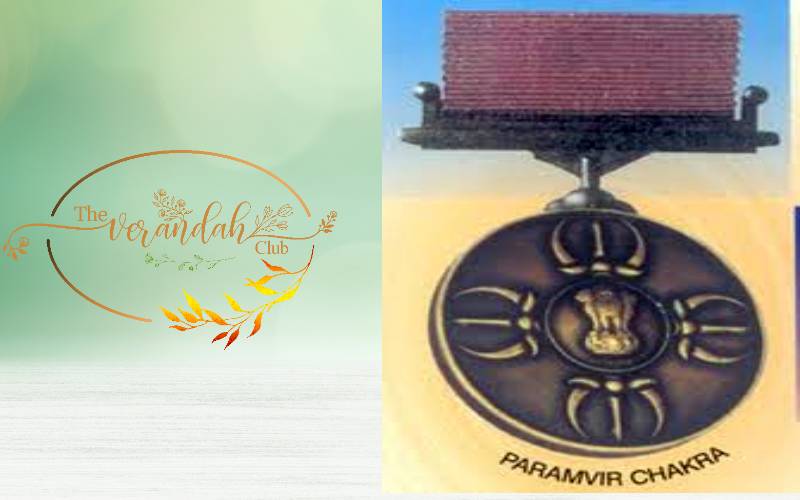
Param Vir Chakra (P V C) or ‘The Wheel of the Ultimate Brave’ is India’s highest military decoration, awarded for displaying distinguished bravery during wartime. The PVC is considered to be equivalent to the Victoria Cross in the United Kingdom and the Medal of Honor in the United States.
The Param Vir Chakra was established by Rajendra Prasad, the first President of India, on our first Republic Day (26 January 1950), with effect from 15 August 1947.
The medal carries in the centre, on a raised circle, the state emblem, surrounded by four replicas of Indra's Vajrayudha, flanked by two copies of Bhavani, Emperor Shivaji’s sword. The motif symbolizes the supreme sacrifice of Rishi Dadhichi, who gave his bones to the gods to make the vajrayudha to kill the evil demon Vritrasura. Dadhichi’s story is found in many sacred texts such as the Rig Veda, Srimat Bhagavatam, Srimat Devi Bhagavatam, and the Mahabharata.
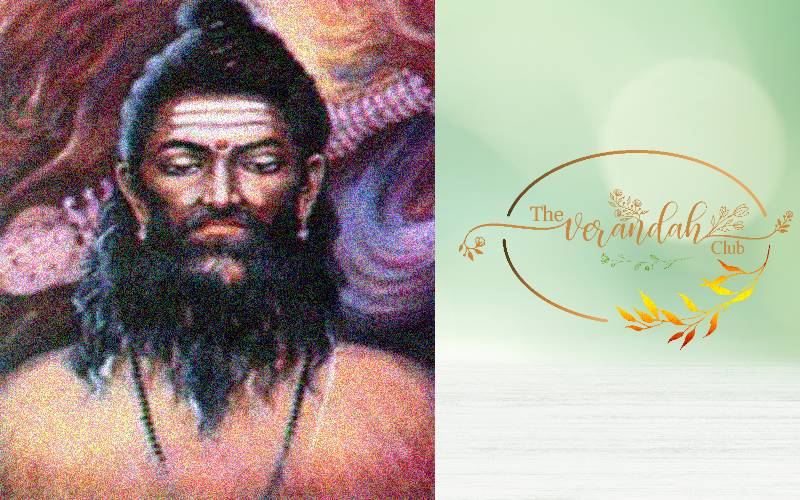
Rishi Dadhichi, son of Rishi Atharvan of the Atharvaveda is believed to have lived in Dudheshwara on the banks of Sabarmati River near present-day Ahmedabad. He had received the Madhu-vidya that could grant people immortality, from Indra, the king of the gods, on condition that he would not pass it on to anyone else. Indra had also vowed that he would cut off the head of the one who taught the Madhu-vidya to anyone else.
But as fate would have it, the Ashwini Twins, the two devas in the form of children, desired to learn Madhu-vidya and approached Dadhichi. They came ready with a plan to prevent Dadhichi’s death in the hands of Indra. They told Dadhichi that they themselves would cut off his head, preserve it and replace it with the head of a horse. When Indra would cut off Dadhichi’s horse head, they would replace it with the original. Dadhichi agreed, and taught them Madhu-vidya. When he heard about this, Indra was blind with fury. He cut off Dadhichi’s head, without even noticing that it was not his original head. After that, as planned, the Ashwini Twins fitted Dadhichi’s original head on his neck and brought him back alive in his true form. Thus, Dadhichi got another name –– Ashvashira, the one with the horse’s head.
Later, a powerful demon named Vritrasura dethroned Indra and drove him out of Heaven. His atrocities knew no bounds. He stole all the water in the world for his own use and that of his army so that all other living beings would perish due to thirst and hunger. He thought, by doing so, he would make sure that there was no human or god alive to challenge his place in Heaven. Indra ran to Lord Brahma for help. Brahma said that the asura could be killed only with a spear formed from the spine of Sage Dadhichi.
Having no other go, Indra went to the banks of the Sabarmati and requested Dadhichi to give up his body for killing the asura. Dadhichi could have turned down the request because Indra had cut off his head once. But when he realized that his sacrifice would destroy the evil asura and help the humanity and the devas, he drew up his breath force and willingly vacated his body. The animals licked away the flesh and Indra got vajrayudha made with Dadhichi’s spine. After a long drawn battle, Indra killed the demon, got back his throne and released the water for the use of all living beings.
But, how did Dadhichi’s bones become so strong and powerful?
Our mythology has a ready answer for this.
Earlier, the devas had left their weapons in Dadhichi’s ashram, promising to come and collect them soon. After waiting for long, the rishi lost hope that they would come back for them. He melted all the weapons and drank them. His bones absorbed the power of all the weapons. So, his bones had the power of all the divine weapons put together.
And now, do we know who was responsible for bringing the Dadhichi connection to our Parama Vir Chakra?
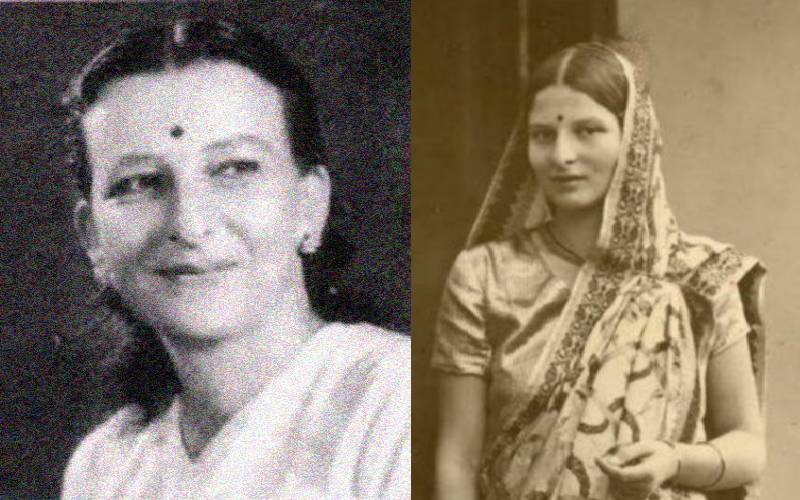
It is none other than the Swiss born Savitri Khanolkar, the wife of an Indian Army officer, Vikram Khanolkar of the Sikh Regiment.
Savitri was born as Eve Yvonne Maday de Maros (20 July 1913 – 26 November 1990) in Switzerland, married Indian Army Captain (later Major General) Vikram Ramji Khanolkar in 1932, and subsequently changed her name to Savitri Bai Khanolkar. Having been fascinated with Indian culture, she read extensively from Hindu scriptures and had a deep knowledge of India's ancient history and legends. She identified closely with Hindu traditions and ideals and effortlessly integrated herself into the Indian society. She could speak Marathi, Sanskrit and Hindi fluently and learned Indian music, dance and painting.
After the decision was taken about the establishment of the gallantry awards, Jawaharlal Nehru entrusted Major General Hira Lal Atal with the responsibility of designing their medals. Major General Hira Lal Atal had heard that Savitri Bai Khanolkar was a skilful designer and had a deep knowledge of the Hindu scriptures and legends. So, he approached her and requested her to design the medal for the Parama Vir Chakra.
Savitribai gladly agreed. She felt that the medal should be a symbol of passionate patriotism and selfless sacrifice. Immediately, Sage Dadhichi’s supreme sacrifice and Emperor Shivaji’s intense patriotism came to her mind. She gave the prime place to the vajrayudha made of Dadhichi’s bones and placed Shivaji’s sword that he called ‘Bhavani’, on its both sides. Thus, India’s highest wartime medal, came to possess Indra's vajra, flanked by Shivaji's sword Bhavani.
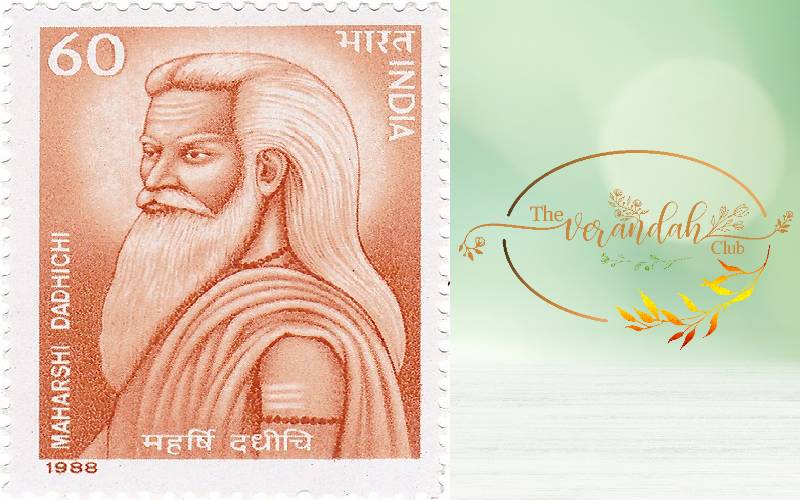
Indian Government’s Ministry of communications has honoured Maharshi Dadhichi by issuing a commemorative stamp in his honour on March 26, 1988.
Dadhichi and Thirukkural
Is there a Dadhichi-connection to this 'Thirukkural,'
‘அன்பிலார் எல்லாம் தமக்குரியர் அன்புடையார்
என்பும் உரியர் பிறர்க்கு.’ ?
While talking about the greatness of love, Thiruvalluvar says, ‘People who don’t love others, keep everything for themselves, but those whose hearts are filled with love, are willing to give up their bones too for the sake of others.
Why did Valluvar talk about the bones? Would he have used the word ‘enbu’ just to rhyme with ‘anbu’ in the previous line? Or was he referring to Sage Dadhichi, who gave up his bones to make a powerful weapon that would destroy a demon and protect humanity?
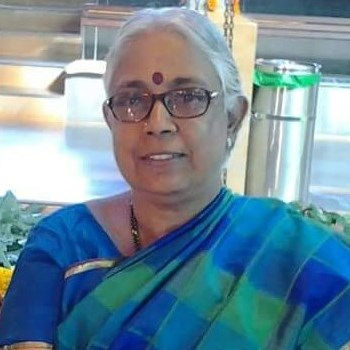
B. Ramadevi is a teacher of English and a freelance reviewer of music and dance. Being a polyglot, she gets inputs from various sources and loves to share it with interested people. She contributes articles for Verandah Club on characters from Indian scriptures and classics.
Sources:
1. https://en.wikipedia.org/wiki/Param_Vir_Chakra#History
2. https://www.amritapuri.org/3617/dadhichi-saves.aum
3. https://en.wikipedia.org/wiki/Madhu-vidya
4. https://hinduism.stackexchange.com/questions/28691/indra-and-vritra-the-tale-of-the-vajrayudha
NEXT ARTICLE
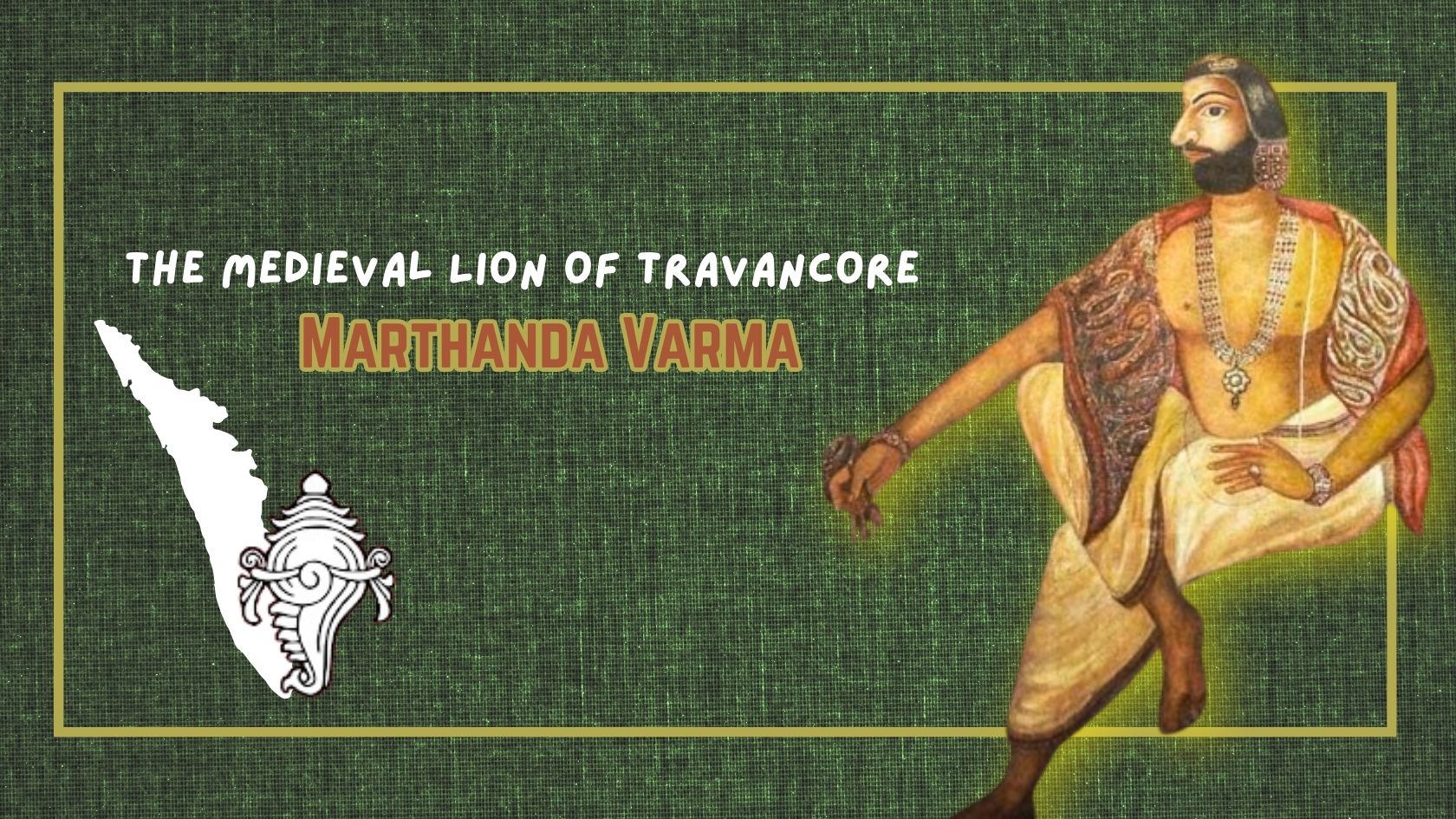
Shri Ramachandra Prasad's captivating narrative and the hot chai that was served at the right time transported me to ancient Kerala, where the extraor...
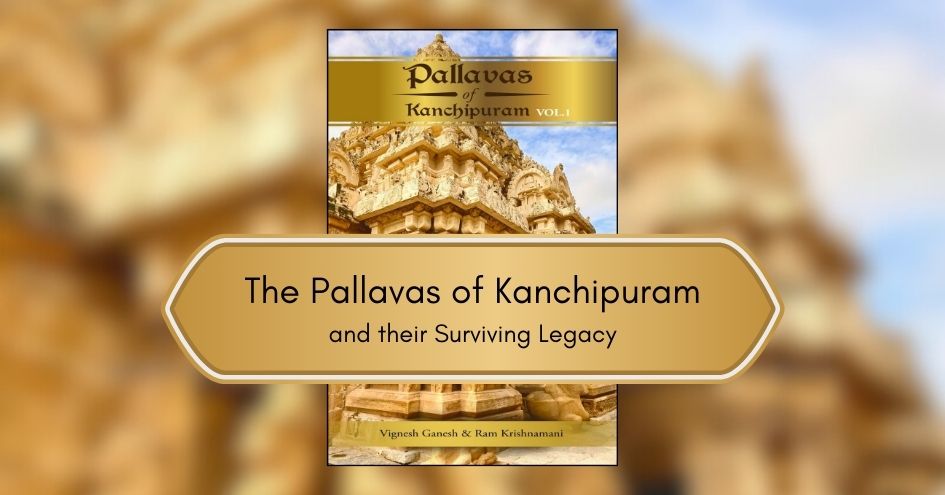
Introduction In Bharatvarsha, History is not the account narrated by victors. It is the record left behind by survivors. The study of Indian History...
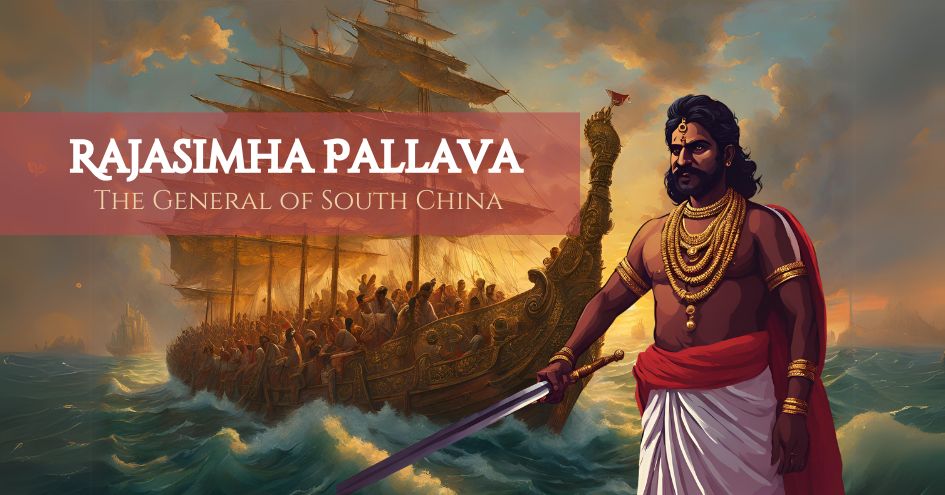
It is the first-half of the 8th Century C.E. in South India. The Pallava kingdom possesses strength and prosperity with some of the greatest monument...